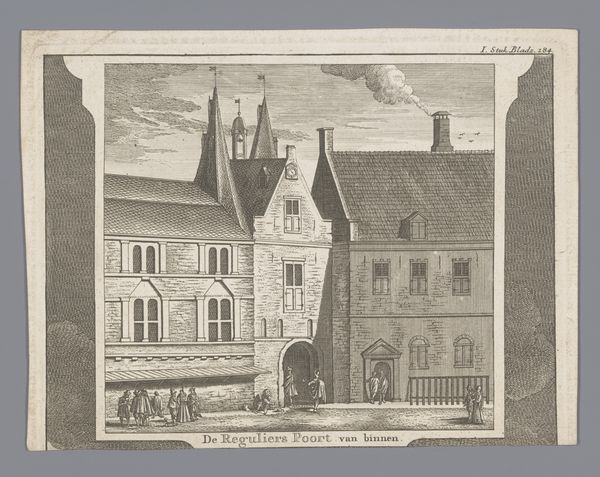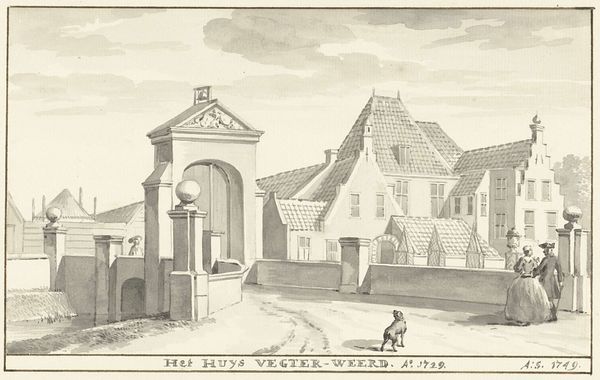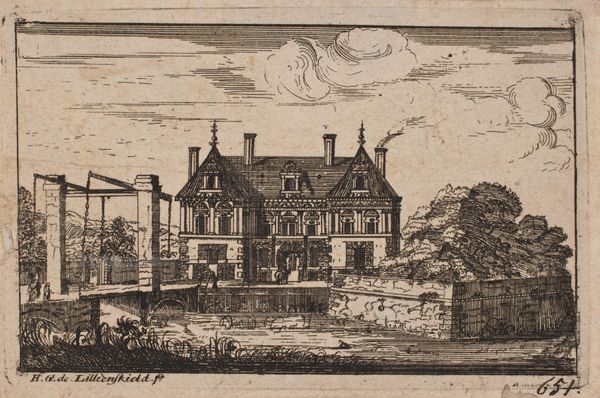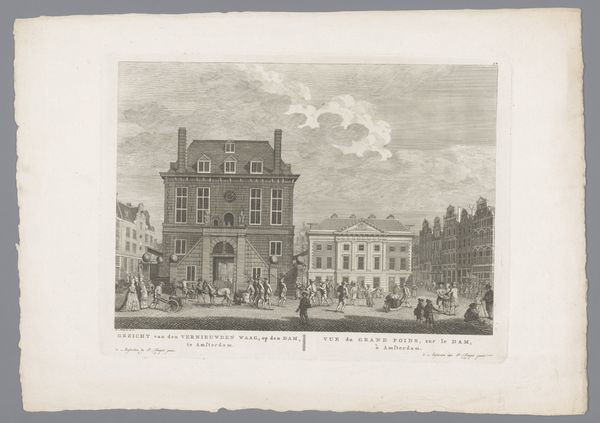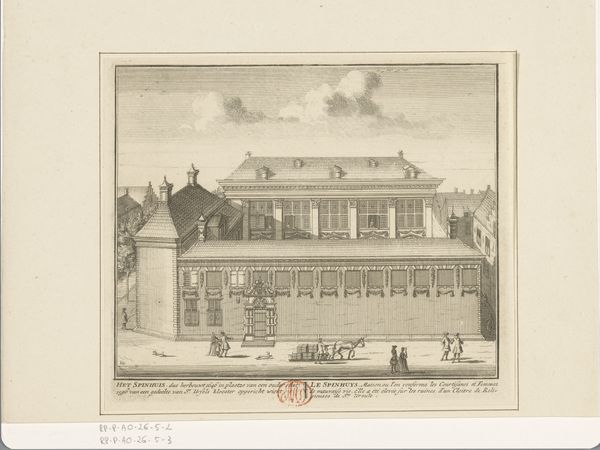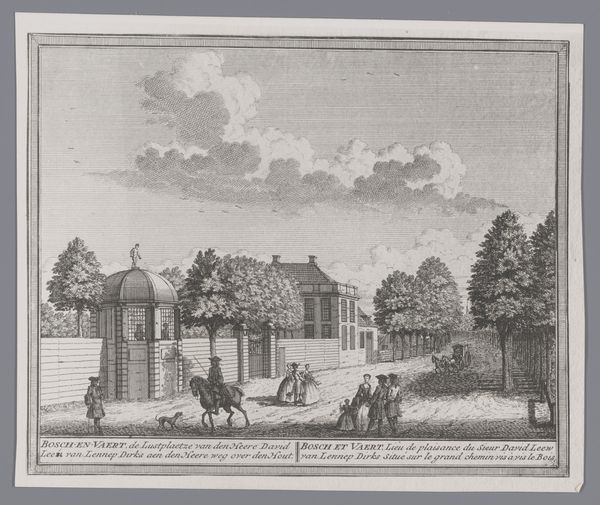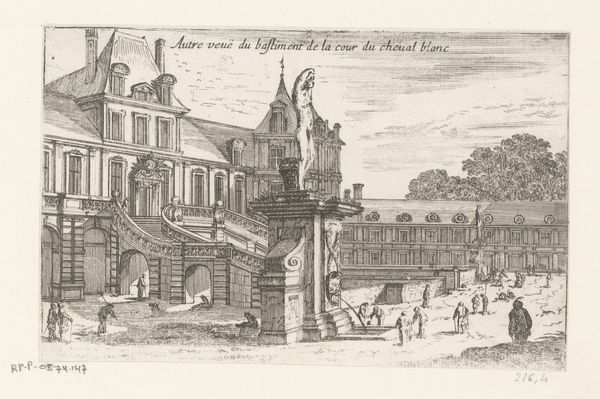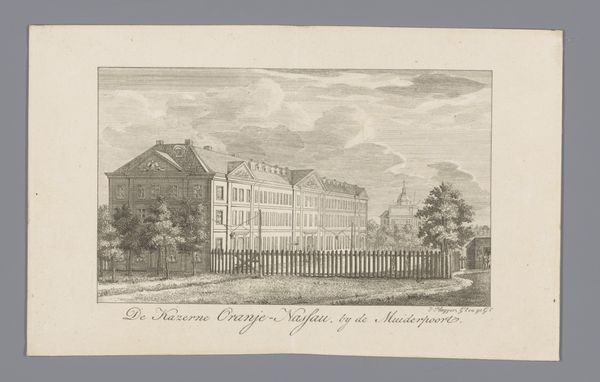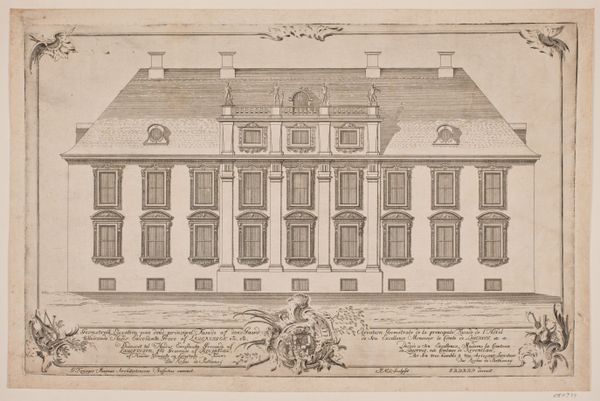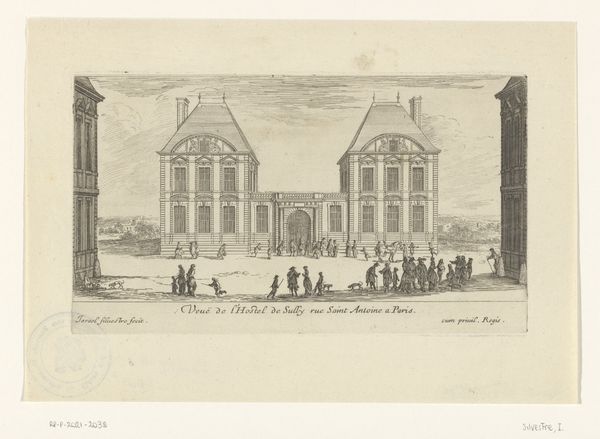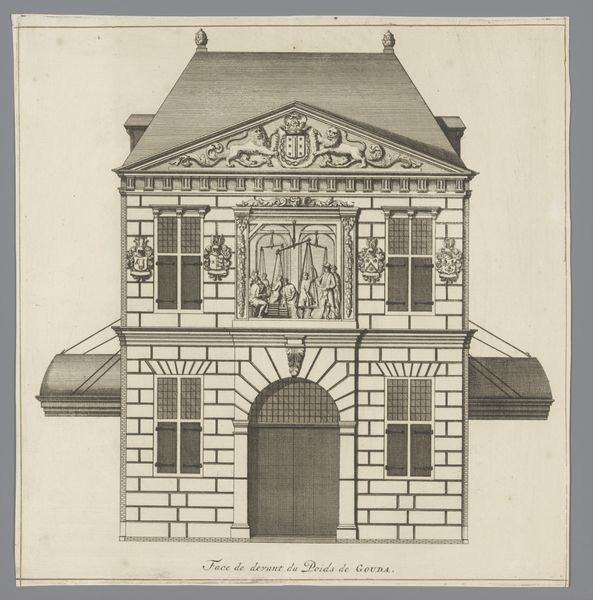
drawing, print, engraving
#
drawing
#
neoclacissism
# print
#
cityscape
#
engraving
Dimensions: height 85 mm, width 109 mm
Copyright: Rijks Museum: Open Domain
Curator: Looking at this artwork, "Gezicht op de Doelenpoort te Leiden," created between 1786 and 1792 by Carel Frederik (I) Bendorp, it strikes me how meticulously detailed the print is. Editor: My first impression is its formal severity—it feels almost staged, despite being a cityscape. The sharp lines of the neoclassical gate and building create a sense of order and control, lacking organic vibrancy. Curator: Indeed. Bendorp renders the Doelenpoort, a structure already laden with social and political significance, through a lens of Neoclassical ideals—rationality and civic virtue are palpable. Engravings like these were instrumental in shaping public perception and fostering a sense of civic identity during this period. Editor: Right, the architecture is certainly the main protagonist. Yet I can't ignore how the human figures seem diminutive, their potential narratives rendered secondary to the imposing stone structures. Where is the resistance, the unruliness of lived experience that contradicts this aspiration for rational perfection? Curator: That tension is interesting, the contrast between the grand structures and the commoners. In its time, the image functioned as more than mere architectural documentation. Prints like these circulated amongst a growing middle class, constructing their notions of national identity and collective memory through the dissemination of such carefully framed visuals. Editor: Exactly. So this image then, as a vehicle of social engineering. It reflects not just the literal appearance of a landmark but also the power structures that shaped it. The stoic architecture looming over smaller depictions of human lives makes this such a powerful example. Curator: Ultimately, examining the historical and socio-political contexts unlocks hidden dimensions, rendering even seemingly straightforward cityscape prints powerful documents of the late 18th century’s evolving social landscape. Editor: Absolutely, analyzing beyond face value exposes ideological weight that visuals carry. By looking closely, it encourages dialogue and opens us up to consider its role within identity, class, and power.
Comments
No comments
Be the first to comment and join the conversation on the ultimate creative platform.
